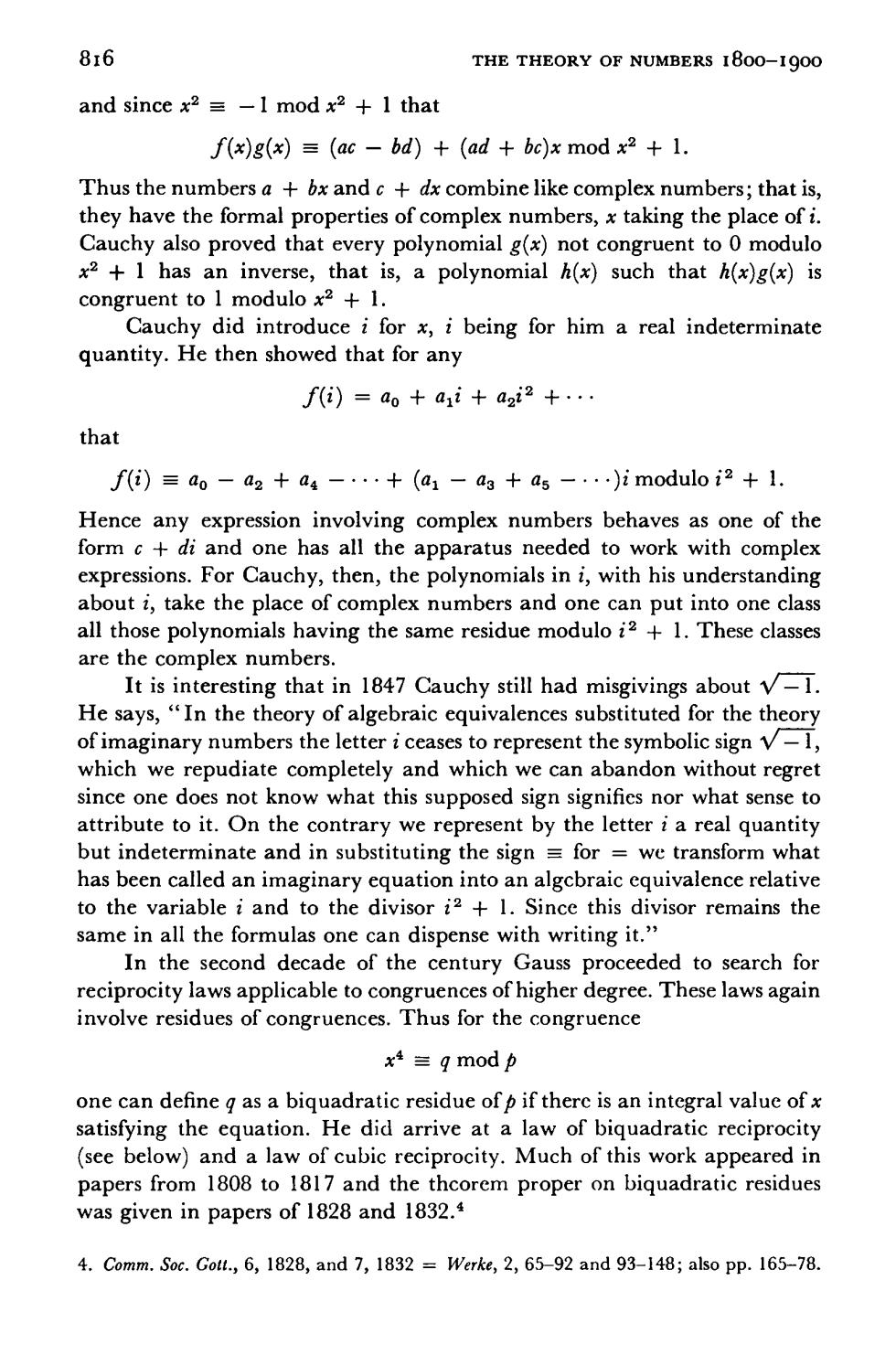正在加载图片...

816 THE THEORY OF NUMBERS 1800-1900 and since x2-I mod x2+1 that f(x)g(x)=(ac-bd)+(ad +bc)x mod x2 +1. Thus the numbers a +bx and c+dx combine like complex numbers;that is, they have the formal properties of complex numbers,x taking the place of i. Cauchy also proved that every polynomial g(x)not congruent to 0 modulo 2+1 has an inverse,that is,a polynomial h(x)such that h(x)g(x)is congruent to 1 modulo x2 +1. Cauchy did introduce i for x,i being for him a real indeterminate quantity.He then showed that for any f(i)=a0+a1i+a22+. that f(i)≡a0-a2+a4-.+(a1-a3+a5-.)i modulo i2+1 Hence any expression involving complex numbers behaves as one of the form c+di and one has all the apparatus needed to work with complex expressions.For Cauchy,then,the polynomials in i,with his understanding about i,take the place of complex numbers and one can put into one class all those polynomials having the same residue modulo i2+1.These classes are the complex numbers. It is interesting that in 1847 Cauchy still had misgivings about v-1 He says,"In the theory of algebraic equivalences substituted for the theory ofimaginary numbers the lettericeases to represent the symbolic sign which we repudiate completely and which we can abandon without regret since one does not know what this supposed sign signifies nor what sense to attribute to it.On the contrary we represent by the letter i a real quantity but indeterminate and in substituting the sign for =we transform what has been called an imaginary equation into an algcbraic equivalence relative to the variable i and to the divisor i2+1.Since this divisor remains the same in all the formulas one can dispense with writing it." In the second decade of the century Gauss proceeded to search for reciprocity laws applicable to congruences of higher degree.These laws again involve residues of congruences.Thus for the congruence x4≡g modp one can define g as a biquadratic residue ofp if therc is an integral value of x satisfying the equation.He did arrive at a law of biquadratic reciprocity (see below)and a law of cubic reciprocity.Much of this work appeared in papers from 1808 to 1817 and the thcorem proper on biquadratic residues vas given in papers of 1828 and 1832. 4.Comm.Soc.Got,6,1828,and7,1832=Werke,2,65-92and93-148;also pp.165-78